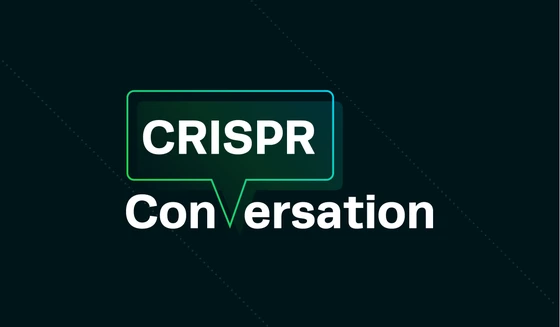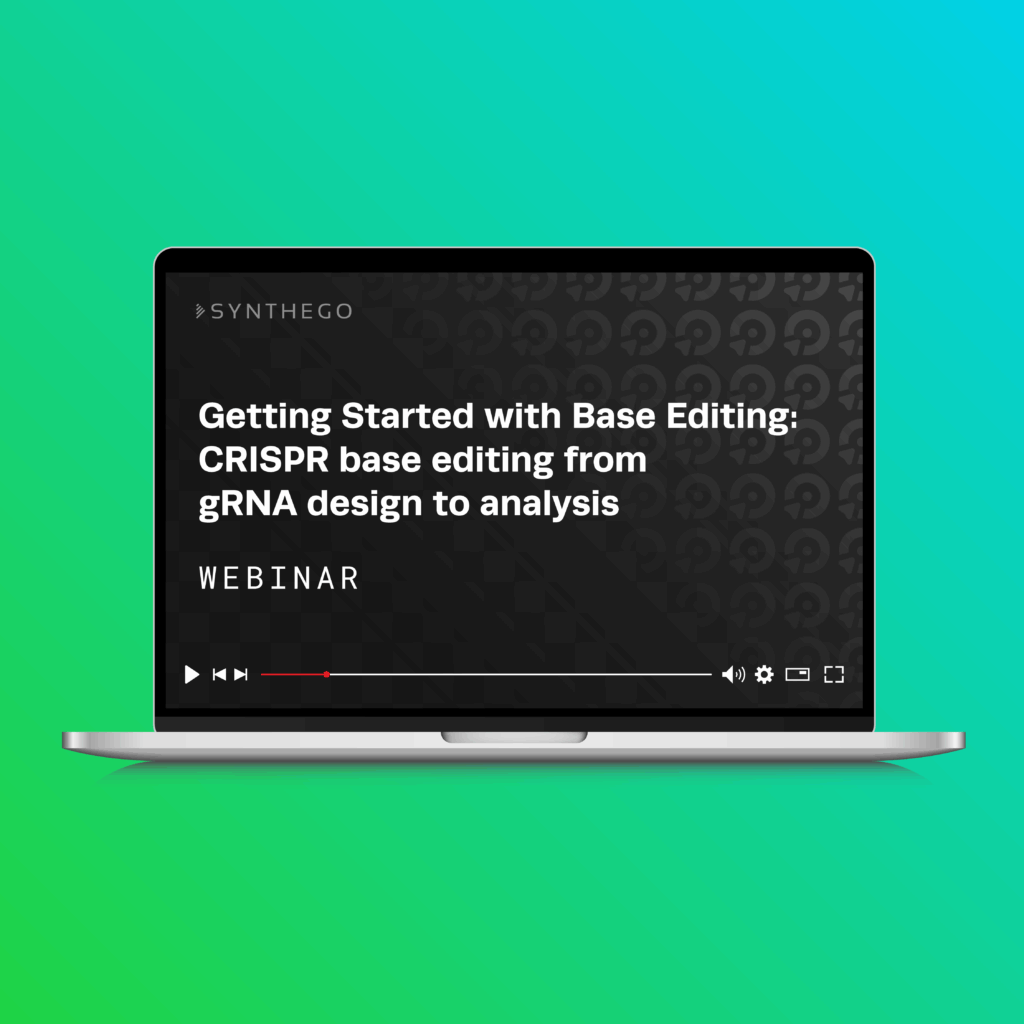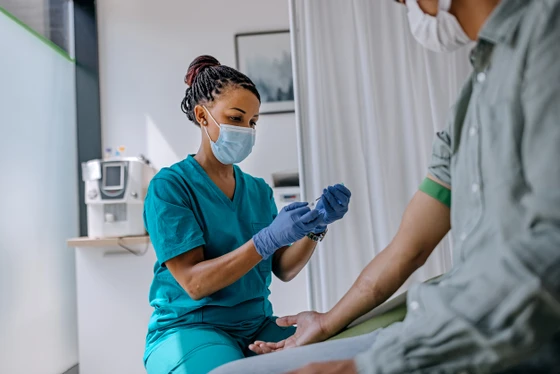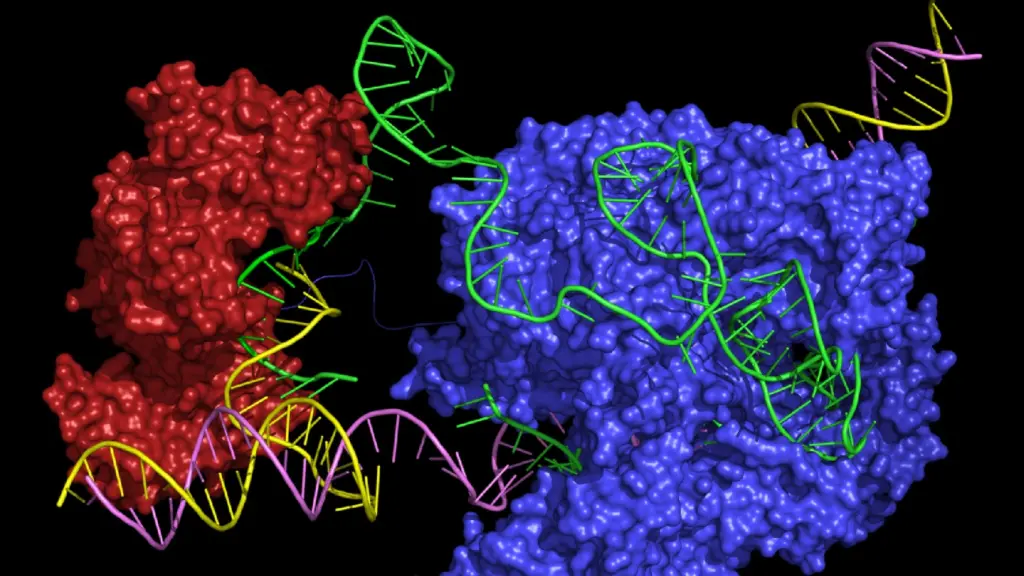Synthego’s CRISPRevolution synthetic RNA kits are now being used by scientists throughout the world to achieve unparalleled CRISPR genome editing with minimal time and labor at a fantastic price point. We decided to find out what researchers thought about using our synthetic sgRNA kits, so we caught up with local scientists Erin Jarvis and Heather Bruce from the Patel Lab at University of California, Berkeley to find out more about their experiences.
Hi Erin and Heather! Can you please tell us a bit about what type of research you do?Erin: We work at the Patel Lab at University of California, Berkeley which focuses on Evolutionary and Developmental Biology. Specifically, we focus on early regulatory patterning genes that can help us answer questions about how an animal form grows and develops. We use arthropods – specifically Parhyale hawaiensis – as a model to conduct our research. They’re great organisms to study morphological specification in because they have numerous different appendages as crustaceans – they have different walking legs that are modified to jaw-like (for feeding), or jumping, clawing, swimming and grasping. These different kinds of legs are what make arthropods one of the most successful phyla on the planet.
Heather: Specifically, we study Hox genes and their related gene families. They’re interesting because they set up the pattern of all these different leg types in the developing arthropod. So how does Parhyale transition from a walking leg to a modified feeding leg during development? We used to think that it took a very different set of genes to develop these, or to build something like a fruit fly versus a human, but then it was discovered that actually a lot of these developmental genes are conserved throughout animals and its more about how they are differentially expressed during development.
Erin: We work at the Patel Lab at University of California, Berkeley which focuses on Evolutionary and Developmental Biology. Specifically, we focus on early regulatory patterning genes that can help us answer questions about how an animal form grows and develops. We use arthropods – specifically Parhyale hawaiensis – as a model to conduct our research. They’re great organisms to study morphological specification in because they have numerous different appendages as crustaceans – they have different walking legs that are modified to jaw-like (for feeding), or jumping, clawing, swimming and grasping. These different kinds of legs are what make arthropods one of the most successful phyla on the planet.
Heather: Specifically, we study Hox genes and their related gene families. They’re interesting because they set up the pattern of all these different leg types in the developing arthropod. So how does Parhyale transition from a walking leg to a modified feeding leg during development? We used to think that it took a very different set of genes to develop these, or to build something like a fruit fly versus a human, but then it was discovered that actually a lot of these developmental genes are conserved throughout animals and its more about how they are differentially expressed during development.
Gene Knockouts
Gene knockouts, in which genes are inactivated so that they no longer make functional protein, are used to address a variety of scientific questions. The CRISPR gene editing tool has made knocking out genes easier than ever before.
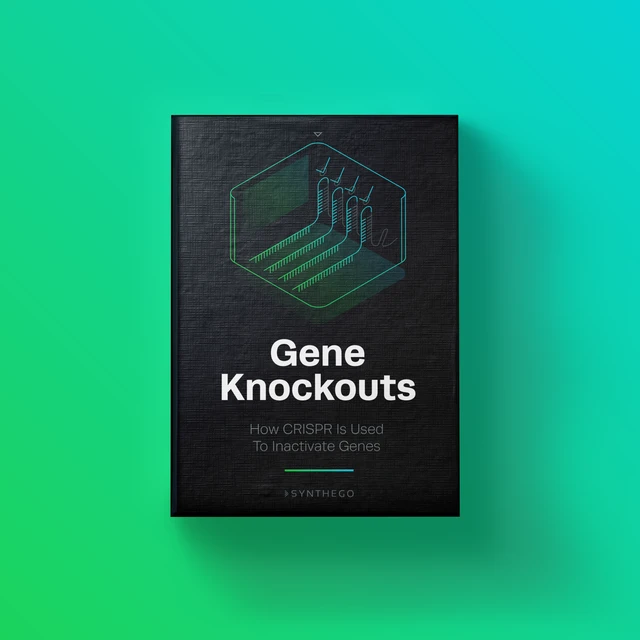
That sounds interesting – we read about the Patel Lab using CRISPR earlier in 2016 in Discover Magazine. How long have you been using this technology?Erin: We started using CRISPR in 2013 to microinject Parhyale embryos when post-doc Arnaud Martin joined. He came in and really very rapidly moved the CRISPR technique forward in Parhyale and we’ve been doing it ever since; before that we were using RNAi to knock-down gene expression. Personally we jumped on the CRISPR bandwagon fairly quickly and got two papers published at the beginning of this year. One is a description of all the different Hox gene expression profiles; another looked at systematically knocking down or knocking out every Hox gene in Parhyale to show a functional description of what those genes do.
Erin: We started using CRISPR in 2013 to microinject Parhyale embryos when post-doc Arnaud Martin joined. He came in and really very rapidly moved the CRISPR technique forward in Parhyale and we’ve been doing it ever since; before that we were using RNAi to knock-down gene expression. Personally we jumped on the CRISPR bandwagon fairly quickly and got two papers published at the beginning of this year. One is a description of all the different Hox gene expression profiles; another looked at systematically knocking down or knocking out every Hox gene in Parhyale to show a functional description of what those genes do.
So when you first starting using CRISPR, how were you making your guide RNAs?Heather: We used IVT (in vitro transcription), duplexing that with Cas9 nuclease.
Heather: We used IVT (in vitro transcription), duplexing that with Cas9 nuclease.
Let’s get to the good stuff, when did you guys first hear about Synthego?Erin: April 2016. The summer courses offered at Woods Hole Marine Biology Lab in Massachusetts includes a Developmental Biology course that our PI, Nipam Patel, teaches. We go over there each year and assist with the arthropod section, and this year we wanted to use CRISPR. We wanted to let the students knock-out their gene of choice, and there’s no way we could have made all the guides using IVT; the timing and facilities just wouldn’t have enabled us to do that. We tested the Synthego CRISPR kits before we went to Woods Hole, so we were sure they would work well.
Erin: April 2016. The summer courses offered at Woods Hole Marine Biology Lab in Massachusetts includes a Developmental Biology course that our PI, Nipam Patel, teaches. We go over there each year and assist with the arthropod section, and this year we wanted to use CRISPR. We wanted to let the students knock-out their gene of choice, and there’s no way we could have made all the guides using IVT; the timing and facilities just wouldn’t have enabled us to do that. We tested the Synthego CRISPR kits before we went to Woods Hole, so we were sure they would work well.
Can you tell us a bit more about Woods Hole, it’s kind of famous right?Erin: It’s fantastic! The lab itself was established in the late 1800s, and the courses are like an adult science camp. Graduate students, post docs and even professors attend so everyone has expertise in different areas, and they come to Woods Hole on an equal level which generates this amazing energy.
Erin: It’s fantastic! The lab itself was established in the late 1800s, and the courses are like an adult science camp. Graduate students, post docs and even professors attend so everyone has expertise in different areas, and they come to Woods Hole on an equal level which generates this amazing energy.
Had any of the students in the course used CRISPR before?Erin: There was definitely an interest in CRISPR; I can’t say 100% but I don’t think anyone had used it before. Of course they all knew of it, and they were excited to get to use the Synthego CRISPR kits with us.
Erin: There was definitely an interest in CRISPR; I can’t say 100% but I don’t think anyone had used it before. Of course they all knew of it, and they were excited to get to use the Synthego CRISPR kits with us.
The fact you could use synthetic RNA kits for this course was of real benefit to you then?Erin: Definitely, it was the time limitations and the lack of facilities – we could’ve made all the guides ahead of time with IVT but that would have taken so much time. We then wouldn’t have been able to offer students a choice either. I think that would have taken something away from their experience. With the courses we only had 6 days with the students so to spend a full day of intermittent work to make their own guides would have been too much; the IVT method just isn’t appropriate for an educational setting.
Erin: Definitely, it was the time limitations and the lack of facilities – we could’ve made all the guides ahead of time with IVT but that would have taken so much time. We then wouldn’t have been able to offer students a choice either. I think that would have taken something away from their experience. With the courses we only had 6 days with the students so to spend a full day of intermittent work to make their own guides would have been too much; the IVT method just isn’t appropriate for an educational setting.
Moving on to your own work in the lab, what advantages have you found with using synthetic RNA in your own workflow?Erin: The biggest advantages are undoubtedly the reduced time and energy needed. The old way (IVT) should take maybe 5 hours, but realistically with various issues such as having to find reagents or running out of purification columns, it’s an annoying job that can sometimes run over two days. With the Synthego kits I ordered them and they came 3 days later; I didn’t have to worry about any enzymes running out and within an hour I was injecting my embryos – I got to go home early instead of working late into the night.
Erin: The biggest advantages are undoubtedly the reduced time and energy needed. The old way (IVT) should take maybe 5 hours, but realistically with various issues such as having to find reagents or running out of purification columns, it’s an annoying job that can sometimes run over two days. With the Synthego kits I ordered them and they came 3 days later; I didn’t have to worry about any enzymes running out and within an hour I was injecting my embryos – I got to go home early instead of working late into the night.
How would you compare your transformation rates between using the IVT method and the Synthego synthetic RNA kits?Erin: For the IVT-derived guides we’d seen a knockout/transformation rate of 62% in surviving embryos, versus 90% for the Synthego CRISPR kits – that’s a big difference.
Erin: For the IVT-derived guides we’d seen a knockout/transformation rate of 62% in surviving embryos, versus 90% for the Synthego CRISPR kits – that’s a big difference.
Are synthetic RNA kits a technology that you’ll be using moving forward?Erin: Absolutely! What it really boils down to is time and cost, and I think using the CRISPR kits are a no-brainer – I totally recommend them.
Erin: Absolutely! What it really boils down to is time and cost, and I think using the CRISPR kits are a no-brainer – I totally recommend them.
